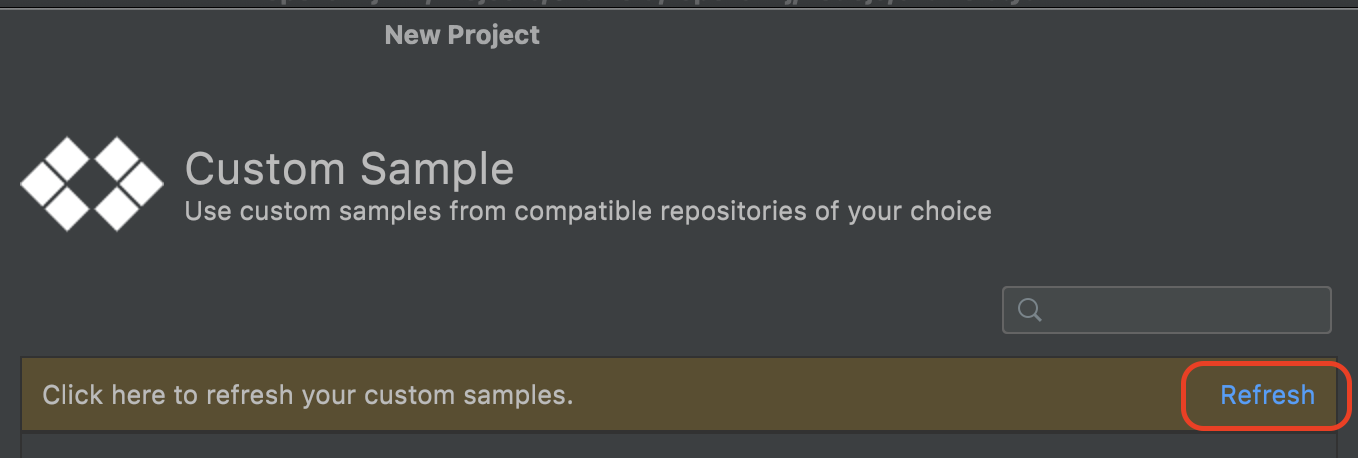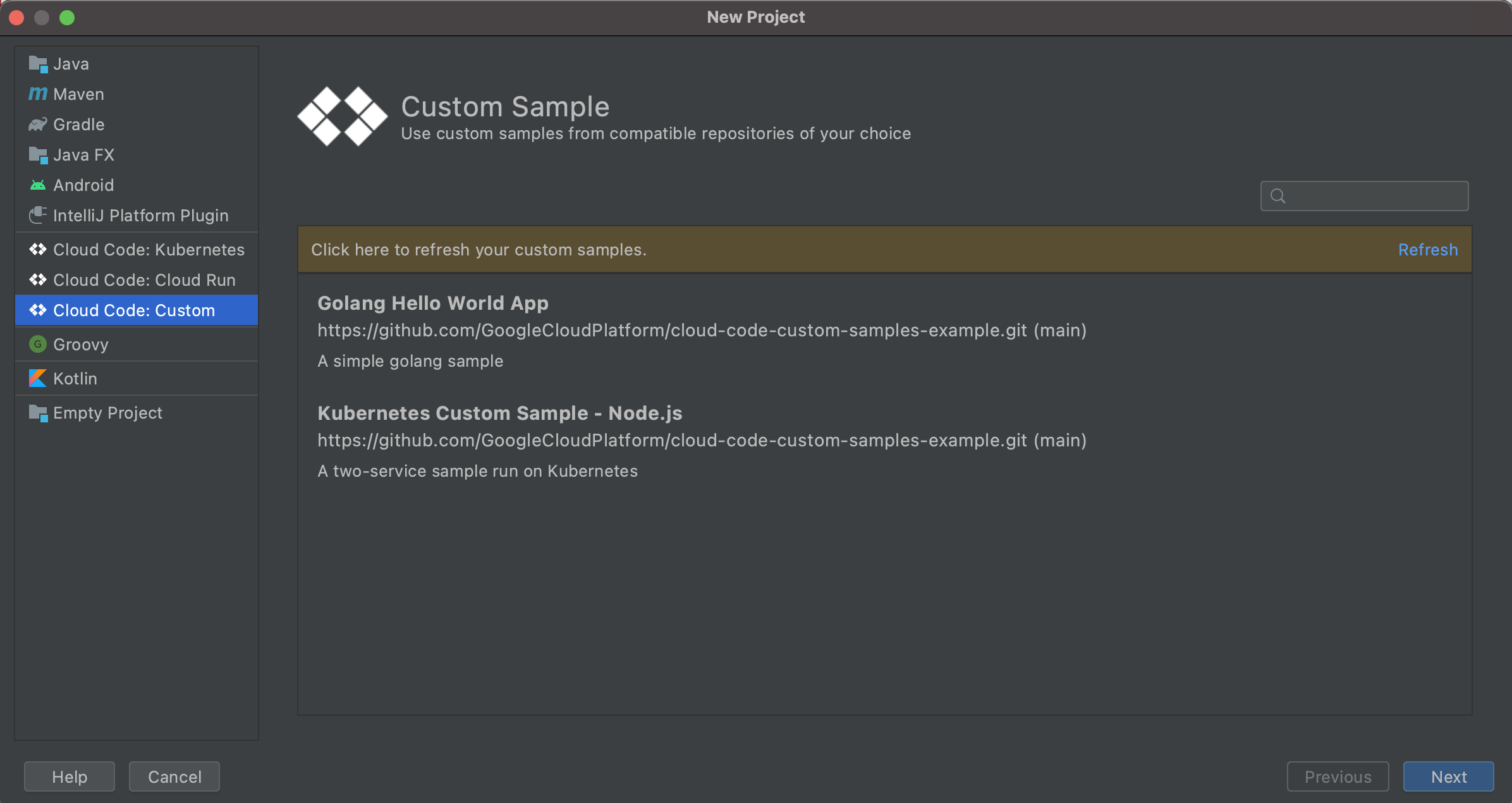Once you've set up your sample repository (or one has been set up for you), you can start creating applications with these samples.
Alternatively, you can import the Cloud Code sample repository if you'd just like to try out the custom sample experience. To better understand how custom sample repositories are set up, it is recommended that you try forking the repository and modifying its structure and content before importing it. You can do this by creating new samples within the repository or modifying the source code to create your own versions of the Hello World or Kubernetes Custom Sample apps.
Creating your app from an imported sample
To create a new application using one of the samples from your sample repository, follow these steps:
Copy the Git URL of the sample repository that you'd like to use.
Navigate to the Custom Samples settings page with File > Settings > Tools > Cloud Code > Custom Samples or for Mac OS X, IntelliJ IDEA > Preferences > Tools > Cloud Code > Custom Samples.

Click + Add to open the Repository for Custom Application Samples dialog.
Enter the Git URL you copied earlier in the Repo URL field and click Next.
The URL in this example is of the HTTPS GitHub format:
https://github.com/username/repo-name.git.
Click Add to authorize your use of the repository in your IDE, if necessary, and to add the sample repository to your IDE.
If your repository addition is successful, you'll see a
 green check mark in the Status column of your table of sample repositories.
The branch field is automatically populated with the repository's default
branch. To edit the branch, select the project and click the table's edit
button.
green check mark in the Status column of your table of sample repositories.
The branch field is automatically populated with the repository's default
branch. To edit the branch, select the project and click the table's edit
button.If a warning icon is displayed in the Status column, hold your pointer over the icon to get more information about why your repository is not valid.
To update your repository accordingly and check the repository's status in your IDE, click
 Reload Repositories
Reload RepositoriesCreate a new project by navigating to File > New > Project.
Select Cloud Code: Custom.
To use the latest version of your samples in Cloud Code, click Refresh.

Choose a sample from the list of available custom samples and click Next to proceed.

Pick a name and project location for your new app.
Once you click Finish, Cloud Code creates your app using your chosen sample and opens it for use.
